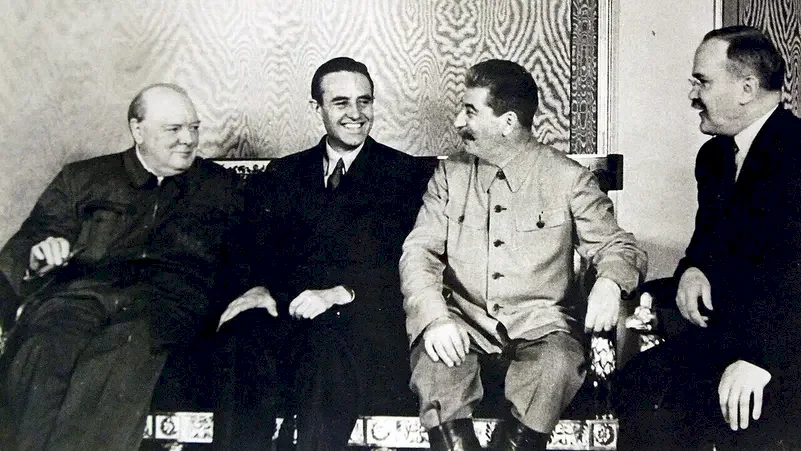
What is the story behind the conference that ignited the Cold War between America and the Soviet Union?
SadaNews - With the end of World War II, the world witnessed the beginning of the Cold War, representing an undeclared conflict that put the Western bloc led by the United States against the Eastern bloc led by the Soviet Union. In addition, the early years following Germany's surrender saw a noticeable increase in the intensity of disagreements and tensions between the allies. The countries liberated by the Soviet army and the future of Germany were among the main points of contention between Moscow and its Western allies.
In 1947, Moscow hosted a conference for the foreign ministers of the allies aimed at discussing the German issue. Instead of calming the atmosphere and reducing tensions, this conference led to disputes that escalated the Cold War.
A Conference on Germany
Between March 10 and April 24, 1947, the Soviet capital Moscow hosted a conference of the Council of Foreign Ministers. At that time, this conference represented the fourth meeting of this council, whose members worked hard to resolve the disagreements among the allies and diffuse the tensions between Moscow and its Western allies.
In this conference, George Marshall represented the United States, while Ernest Bevin represented the British, and the French delegation was headed by Foreign Minister Georges Bidault. Meanwhile, Soviet Foreign Minister Vyacheslav Molotov was present to represent Soviet interests. Moreover, the future of Germany was the most important point of contention at this conference. Since the end of the war, no peace treaty had been concluded with Germany, and the process of determining its borders, political system, and the amounts to be paid in reparations had not been finalized. On the other hand, Germany was divided into spheres of influence among the four allies at the time of the conference.
Disagreement Among Allies
During the meeting, the United States, Britain, and France demanded the establishment of a united democratic Germany with a central government. In contrast, the Soviets rejected this proposal and talked about a demilitarized German state with a federal system, where the eastern part would remain under Soviet influence.
On the other hand, the Soviets demanded reparations from Germany in the form of economic and industrial benefits. Meanwhile, the Americans rejected this and spoke of establishing a stable German state to avoid a repeat of what happened in 1918. Additionally, the Americans mentioned the need for Germany to adopt a new constitution to ensure its political stability, but this did not sit well with Moscow, which insisted that the drafting of the German constitution be under its supervision.
Due to all these disagreements, the conference concluded its work without achieving any results, thus marking a failure that further deepened the division between the Soviet Union and its former Western allies.
Because of this, everyone leaned towards the idea of dividing Germany into two states. Upon returning to Washington, U.S. Secretary of State proposed the Marshall Plan to provide massive assistance to U.S. allies in Europe, provoking the anger of Moscow, which forced its allied countries to reject this aid.
In the following months, the United States, Britain, and France began preparing to unify their spheres of influence in Germany as a prelude to declaring the establishment of West Germany. At the same time, the Soviets prepared to announce East Germany in the German area under their control.

Windows and Doors Generate Electricity.. An Innovation that Changes the Future of Cities

Artificial Intelligence: A Hidden Danger to Human Minds

In Numbers.. Real Madrid the "Nightmare" of Barcelona in the Spanish Super Cup

New Data Breach at Meta Reveals Sensitive Information for Millions of Instagram Users

Most Expensive Coaches in Football History

Undiagnosed Diabetes: Warning Signs Your Body Sends That Should Not Be Ignored

Egypt's Representative Professions Syndicate Head Reveals Details About Sherine's Absence

